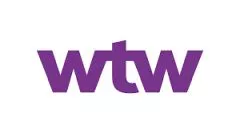Flexible benefits platforms allow employees to tailor their own benefit portfolios. This article shares how they are a 'win-win' for organisations and employees alike.
As the demand for personalised benefits to attract and retain talent intensifies, employers are gravitating towards flexible benefits as an effective solution.
Recent WTW research demonstrates how critical it now is for employers to share the positive impact of flexible benefits as widely as possible across all echelons. When asked to identify the top three most important benefits strategy issues, for example, meeting the needs of their entire workforce was ranked as the most important area of focus1.
Flex platforms are designed to do exactly this. They present a diverse array of choices tailored to individual needs and preferences, allowing employees to curate their benefits portfolios themselves. By allowing employers to constantly compare and contrast the use rates of different offers, they also help to pinpoint popularity.
In our most recent survey on priorities for employee benefits, companies acknowledged that costs are best controlled by aligning total rewards costs with what employees value most - and by getting rid of under-utilized or under-valued benefits (46%)2.
Here, we look at how both employees and employers can benefit from the flex effect.
Transforming employee benefits engagement
Hyper-personalisation is the bedrock of any flex platform. Employers can cater to diverse demographics and lifestyles by offering a long menu of options, highlighting an employer's commitment to inclusivity and ensuring wider relevance across the whole workforce.
Employee benefits offerings should reflect changing circumstances, individual life stages and shifting expectations, enabling employees to select benefits that resonate with their unique circumstances and preferences as they evolve. In this way, flex platforms ensure that benefits remain pertinent and impactful throughout an employee's working life. Accessibility is another pivotal feature of flex platforms.
Traditional benefits enrolment processes can be laborious and time-consuming. Flex platforms streamline this experience by offering intuitive interfaces and self-serve functionalities. Employees can easily access information, make selections and manage their benefits at their convenience, improving overall engagement and participation.
Flex platforms provide valuable resources, including educational materials and interactive tools. They help employees understand the value of each benefit and play a crucial role in guiding and empowering them to make informed choices about their benefits. Regular monitoring and evaluation ensures that schemes stay in line with evolving needs. Employers can easily measure employee engagement with current benefits and refine offerings accordingly. By actively listening to employee concerns and suggestions, they can identify areas for improvement and implement changes that enhance the overall employee experience.
Regular surveys and in-person focus groups can be used to gather feedback, not just on the popularity of the benefits on offer, but also on the flex platform's usability and functionality. Flex platforms also shine at quick and efficient communications, enabling employers to communicate changes and send reminders promptly, again helping to encourage employee take-up.
Streamlining benefits management
Flex platforms enable HR teams to operate more efficiently and effectively. Rather than juggling multiple benefits vendors and platforms, employers can use a single flex platform to administer benefits programmes through one integrated system. From enrolment and eligibility tracking to ongoing communications, such platforms automate many aspects of benefits administration, cutting administrative overheads, streamlining workflows and reducing the risk of errors.
Data insights and analytics provided by flex platforms offer valuable insights into employee benefits take-up, preferences and trends. If analytics reveal low participation in a particular wellbeing programme, for example, employers can either target communications campaigns to raise awareness or adjust programme incentives to boost take-up. Employers can analyse and compare participation across different segments to inform future benefits strategy and communication. Additionally, the automated tools and algorithms that flex platforms typically offer facilitate cost analysis of benefits and forecasting. This enables employers to make informed decisions about benefit offerings and budget allocations.
Flex platforms are also innately scalable. Whether accommodating a growing workforce or adjusting benefits offerings in response to changing market dynamics, they provide the flexibility and agility necessary for employers to remain competitive and responsive.
The flex effect
Flex platforms can serve as transformative tools for augmenting benefits engagement and streamlining management processes. By embracing these platforms and implementing best practices, employers can empower their workforce with personalised benefits options, modernise administrative processes and cultivate a culture of employee wellbeing and satisfaction.
How we can help
We unlock the business value of employee benefits and wellbeing, boosting the effectiveness of total rewards, increasing employee engagement and improving performance and productivity. To find out more about how we can help you to implement an integrated employee wellbeing strategy, including flex benefits, complete the form opposite or below on a mobile device.
Footnotes
1. WTW Benefits Trends Survey Report 2023 — United Kingdom
2. WTW Priorities for Employee Benefits Survey: a global HQ perspective 2024
The content of this article is intended to provide a general guide to the subject matter. Specialist advice should be sought about your specific circumstances.


